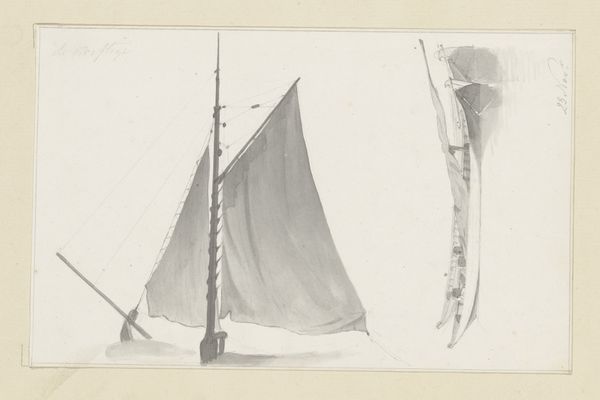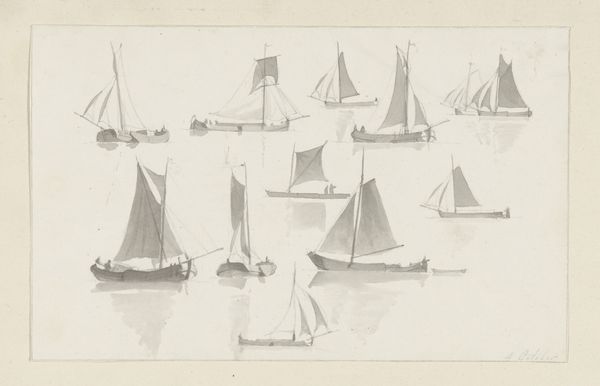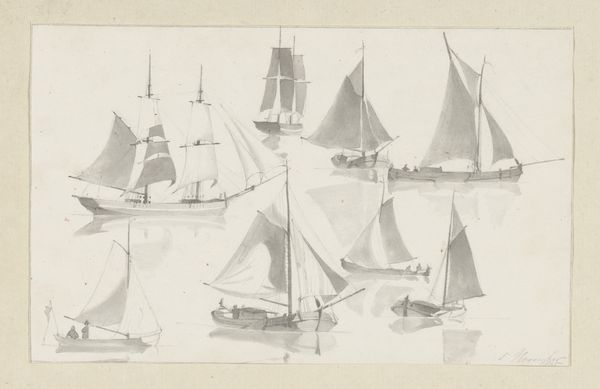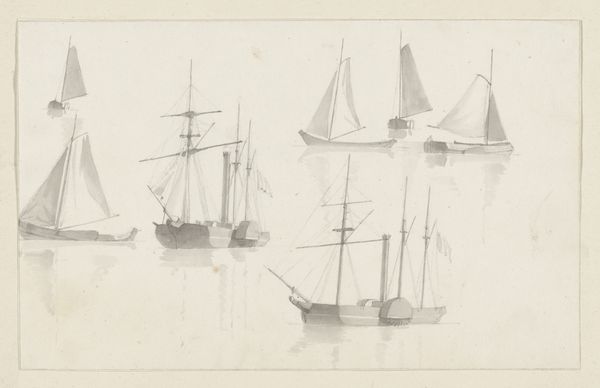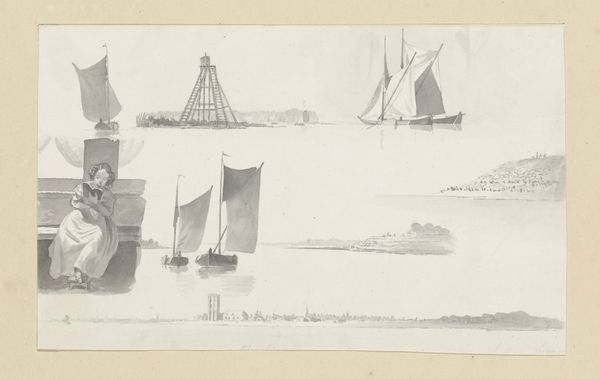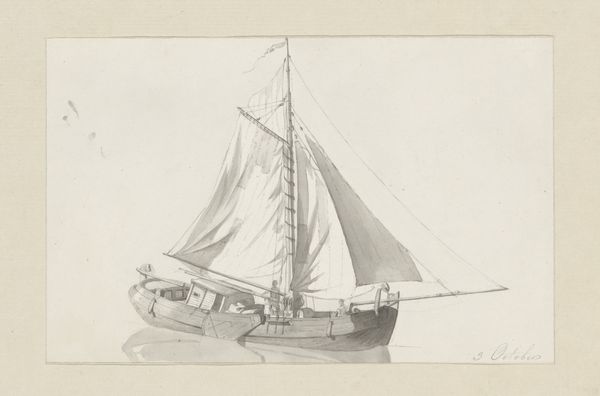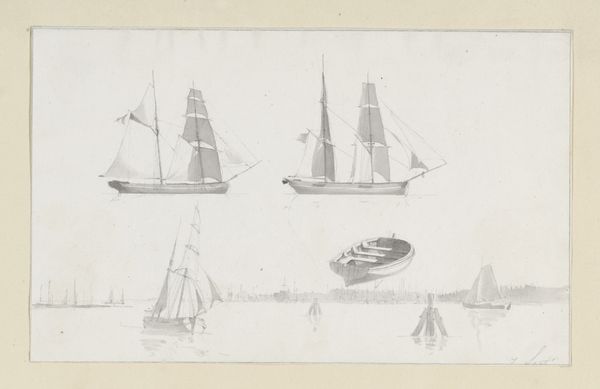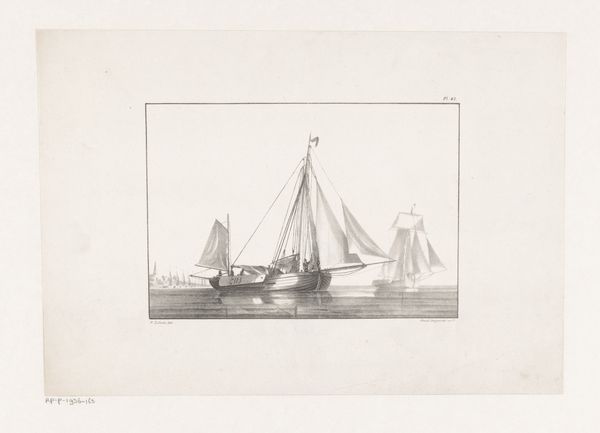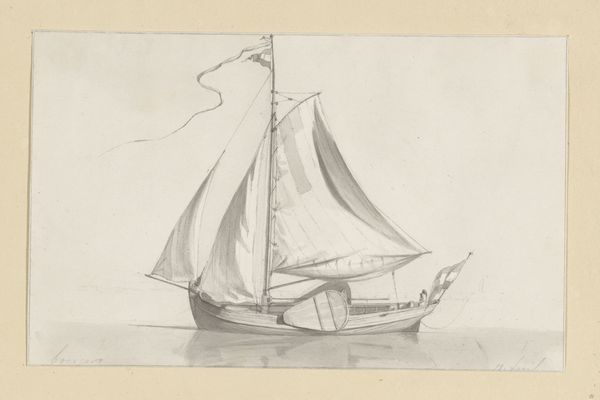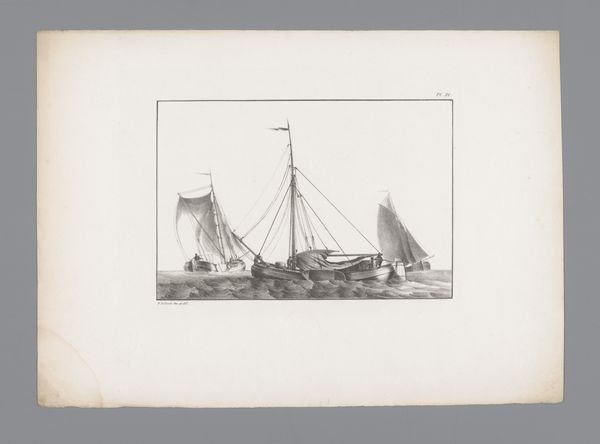
drawing, paper, pencil
#
portrait
#
drawing
#
comic strip sketch
#
imaginative character sketch
#
light pencil work
#
dutch-golden-age
#
sketch book
#
landscape
#
paper
#
personal sketchbook
#
idea generation sketch
#
sketchwork
#
romanticism
#
pencil
#
sketchbook drawing
#
genre-painting
#
storyboard and sketchbook work
#
sketchbook art
Dimensions: height 121 mm, width 192 mm
Copyright: Rijks Museum: Open Domain
Curator: Welcome. Today, we are looking at a sheet of sketches by Hendrik Abraham Klinkhamer, dating roughly from 1820 to 1872. It is currently held here at the Rijksmuseum. Editor: Immediately, I’m struck by the juxtaposition—a pensive, seated woman on the left and these meticulously rendered sailboats scattered across the right. There’s a palpable stillness contrasted with potential movement. Curator: Precisely. Klinkhamer, though not widely celebrated today, occupied a space where Romantic sensibilities met genre painting traditions. The sheet demonstrates a common practice during that period, where artists combined figure studies and landscapes as part of the preparation process for larger works or as standalone studies. Editor: The woman, she almost seems imprisoned within the frame, doesn’t she? Her gaze is averted, her attire suggesting a certain domesticity, yet she's sidelined by these symbols of freedom and trade. What was the role of women in Dutch society during the golden age, what spaces did they have? This contrast is something important to consider when observing Klinkhamer’s sketch. Curator: You've raised a pertinent point. While the sketch is dated later than the Dutch Golden Age, reflections of that earlier socio-political structure certainly lingered. Genre painting often depicted women in domestic roles, subtly reinforcing those societal expectations. Perhaps Klinkhamer, through the composition, intended to pose a question regarding those very boundaries. Editor: Or, we may simply see Klinkhamer sketching things in view around him in that precise moment, which doesn't detract us from examining it. The rendering of the ships themselves, almost like collected specimens, speak to the Netherlands’ reliance and fascination with naval prowess and maritime trade at that time. Each sail is delicately detailed, hinting at different types of vessels, each a vessel also filled with cultural baggage. Curator: Agreed. The use of pencil on paper provides a unique immediacy. The sketch doesn't feel labored over, lending it an almost diaristic quality. It gives us a glimpse into the artist's creative thought process, linking the inner, domestic sphere represented by the woman, with the outward, explorative world of the sea. Editor: It really makes you wonder about her story. This work reveals the potential for complex interpretation even in the most understated compositions, highlighting the importance of contextual awareness in viewing art. Thank you, curator. Curator: Thank you, I appreciate you shining a different light on this sheet of studies by Klinkhamer, making us realize how multifaceted and historically filled what looks to be such an innocuous and everyday scene, really is.
Comments
No comments
Be the first to comment and join the conversation on the ultimate creative platform.

